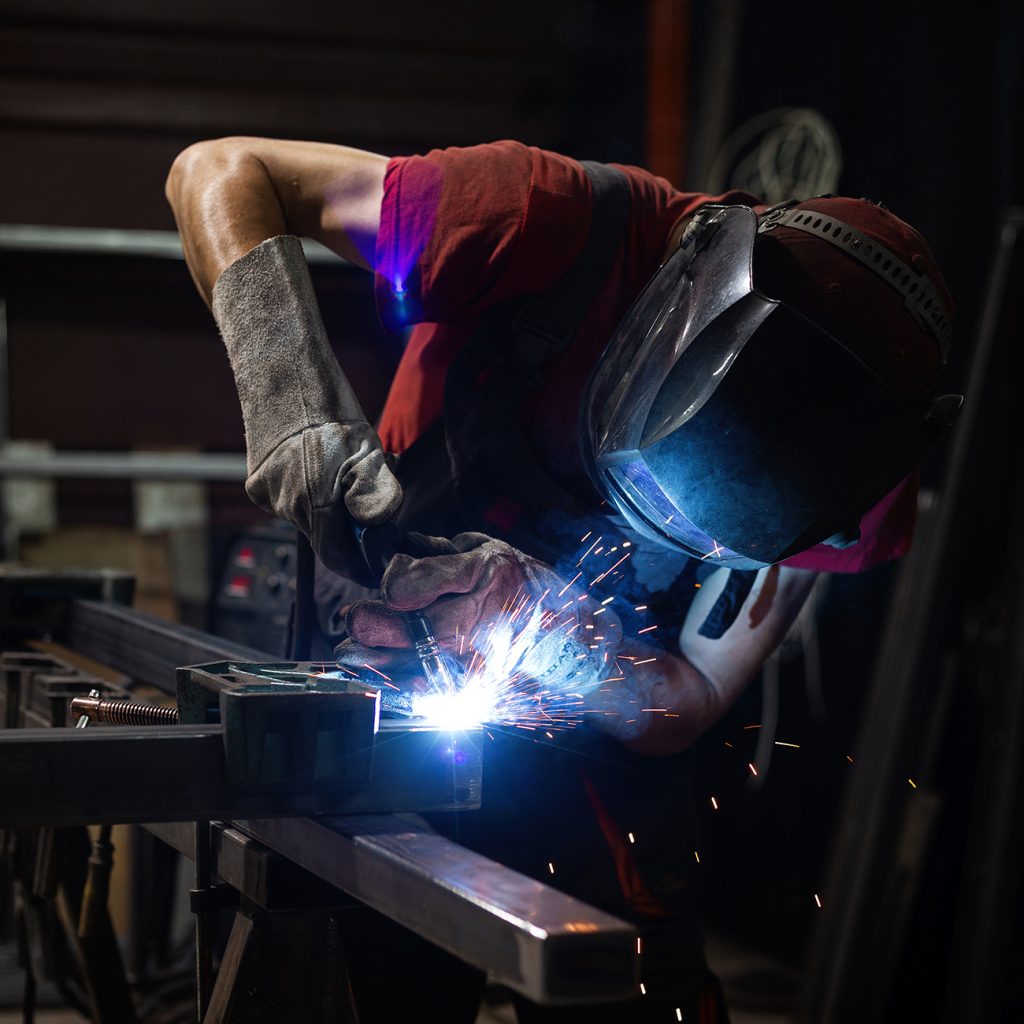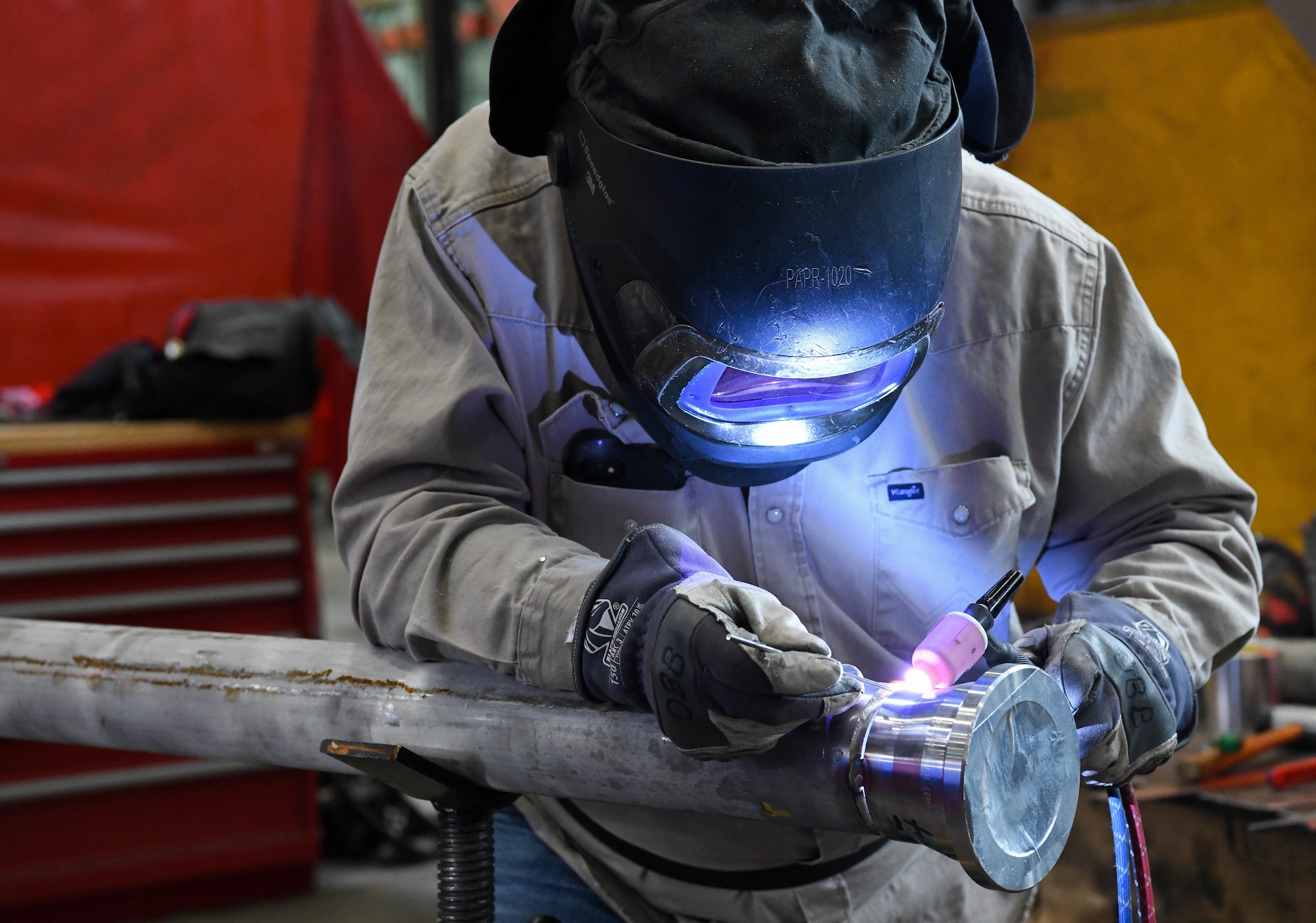Usual Welding Repair Issues and Exactly How to Address Them Efficiently
Welding fixings typically experience a variety of issues that can jeopardize the integrity of the end product. Common problems include inadequate penetration, porosity, and misalignment, amongst others. Each issue presents special challenges that call for certain approaches for resolution. Understanding these issues is essential for welders aiming to boost their abilities and end results. This conversation will certainly discover these typical welding repair work problems and reliable techniques to resolve them.
Inadequate Penetration
Poor penetration occurs when the weld metal falls short to completely fuse with the base product, resulting in weak joints and potential structural failings. This issue frequently comes from insufficient heat input, wrong electrode angle, or incorrect welding speed. Welders might encounter inadequate infiltration as a result of a mistake of the essential parameters for a certain material thickness or type. In addition, contamination on the base product's surface can impede reliable bonding, worsening the problem. To deal with insufficient penetration, welders should guarantee ideal setups on their equipment and preserve a tidy work surface. Regular assessment of welds is advised to identify any type of shortages early, permitting timely corrections and the avoidance of endangered architectural integrity in bonded assemblies.
Porosity
Porosity is a typical defect in bonded joints that shows up as little gas bubbles caught within the weld metal. This issue can endanger the integrity of the weld, resulting in decreased toughness and possible failing under stress. Montana Mobile Welding and Repair Belgrade Fabrication. Porosity typically arises from contamination, wetness, or inappropriate welding techniques, which allow gases to escape right into the liquified weld swimming pool. To deal with porosity, welders must assure appropriate surface prep work, preserve a clean working environment, and make use of ideal welding criteria. Furthermore, picking the right filler material and securing gas can alleviate gas entrapment. Routine inspection and testing of welds can assist recognize porosity early, guaranteeing prompt corrective actions are taken, thereby maintaining the quality and reliability of the bonded structure
Misalignment
Imbalance in welding can emerge from various elements, including incorrect configuration and thermal growth. Understanding the source is important for effective resolution. A number of modification strategies are offered to straighten parts and ensure structural honesty.
Root causes of Misalignment
Welding imbalance frequently originates from a range of underlying issues that can compromise architectural integrity. One main cause is improper fit-up of elements before welding, which can bring about voids and irregular surface areas. Variants in thermal development throughout the welding process can likewise lead to distortion, especially if the materials being signed up with have different coefficients of growth. Additionally, inadequate fixturing and clamping may fall short to hold components firmly in place, causing activity throughout welding. Inadequately maintained equipment, consisting of welding equipments and devices, might present inconsistencies in the weld grain, further adding to misalignment. Operator error, stemming from not enough training or experience, can also play a substantial function in producing misaligned welds.

Modification Techniques Offered
Resolving imbalance effectively calls for a combination of restorative strategies tailored to the specific issues handy. One common approach is the usage of components or jigs to hold elements in the correct position during welding, guaranteeing consistent positioning. In addition, preheating the materials can help in reducing distortion and boost fit-up. For considerable imbalance, mechanical adjustment techniques, such as utilizing hydraulic jacks or clamps, can be employed to fix the setting before welding. Post-weld warm treatment may additionally be needed to relieve anxieties brought on by misalignment. Ultimately, mindful examination and adjustment during the arrangement phase can stop misalignment concerns from coming to be substantial issues, advertising a smoother welding procedure and boosting overall structural stability.
Distortion
Distortion is an usual difficulty in welding that can develop from numerous variables, including uneven heating and cooling. Understanding the sources of distortion is crucial for executing reliable prevention strategies. Addressing this concern not only enhances architectural integrity but also improves the overall high quality of the weld.
Root causes of Distortion
When based on the extreme warm of welding, materials often undertake adjustments that can lead to distortion. This sensation mostly occurs from thermal development and contraction during the welding procedure. As the weld location heats up, the product expands; upon cooling, it acquires, which can develop interior tensions. Furthermore, uneven home heating throughout a workpiece can intensify these stresses, leading to warping or flexing. The sort of product also plays a substantial function; metals with differing thermal conductivity and coefficients of growth might react in a different way, causing unforeseeable distortions. Inadequate joint style and poor fixturing can contribute to imbalance during welding, boosting the possibility of distortion. Recognizing these reasons is essential for efficient welding repair and prevention strategies.
Prevention Techniques
Reliable avoidance methods for distortion throughout welding focus on controlling warm input and ensuring appropriate joint i loved this layout. Keeping a constant heat input assists to decrease thermal growth and contraction, which can result in distortion. Utilizing strategies such as preheating the workpiece can also minimize the temperature level gradient, advertising uniform home heating. In addition, choosing suitable joint styles, such as T-joints or lap joints, can improve stability and reduce stress and anxiety focus. Executing proper fixturing to secure the workpieces in position additionally aids in maintaining placement during the welding process. Staggered welding series can distribute heat more equally, avoiding localized distortion. By using these techniques, welders can greatly reduce the possibility of distortion and enhance the total high quality of their welds.
Fracturing
Cracking is a common issue come across in welding repair work, typically arising from different factors such as inappropriate cooling prices, product choice, or inadequate joint preparation. The occurrence of splits can significantly jeopardize the stability of the weld, bring about potential failings throughout procedure. To resolve this problem, from this source welders have to initially evaluate the origin, making sure that materials are compatible and suitably chosen for the details application. In addition, managing the air conditioning rate throughout the welding process is important; rapid air conditioning can generate stress and anxiety and cause breaking. Correct joint style and preparation also add to lessening the danger. Carrying out these approaches can improve weld high quality and sturdiness, ultimately minimizing the possibility of breaking in ended up weldments.

Insufficient Blend
A considerable problem in welding repair work is insufficient blend, which occurs when the weld steel does not appropriately bond with the base material or previous weld passes - Belgrade. This defect can lead to weaknesses in the joint, possibly endangering the integrity of the welded framework. Variables adding to insufficient fusion include inadequate warm input, incorrect welding strategy, and contamination of the surface areas being signed up with. To resolve this problem properly, welders should ensure correct pre-weld cleaning and surface preparation, in addition to change their welding specifications to achieve sufficient penetration and combination. Regular assessment throughout the welding procedure can likewise assist determine insufficient fusion early, enabling for timely restorative measures to improve the overall high quality of the weld
Overheating
While welding fixings can enhance architectural stability, overheating offers a substantial obstacle that can cause product deterioration. Excessive warm during welding can Clicking Here change the mechanical residential or commercial properties of metals, causing lowered stamina, raised brittleness, and warping. This phenomenon is specifically essential in high-stress applications where structural integrity is vital. Determining overheating can involve aesthetic evaluations for staining or distortion, as well as keeping track of temperature during the welding procedure. To minimize the risks connected with getting too hot, welders must utilize appropriate strategies, such as controlling heat input, changing travel rate, and making use of suitable filler materials. In addition, executing pre- and post-weld heat treatments can help restore material residential properties and improve the total top quality of the repair work, making certain lasting efficiency and safety and security.
Regularly Asked Inquiries
What Are the Typical Indicators of a Welding Defect?

Just How Can I Check My Welds for Top quality?
To test welds for high quality, one can make use of aesthetic inspections, ultrasonic screening, and radiographic techniques. Each strategy guarantees structural integrity, determines defects, and validates adherence to specified requirements, eventually improving the dependability of the welded joints.
What Security Preventative Measures Should I Take While Welding?
When welding, one must focus on safety by using suitable personal protective tools, making sure appropriate air flow, protecting combustible materials away, maintaining a clean workspace, and being aware of environments to avoid crashes and injuries.
Can I Repair a Weld Without Renovating the Entire Joint?
Fixing a weld without remodeling the entire joint is feasible, depending on the damage (Belgrade). Methods such as grinding, including filler material, or making use of a welding procedure can efficiently address certain imperfections while preserving the bordering framework
What Tools Are Important for Efficient Welding Repairs?
Necessary tools for reliable welding fixings consist of a welding device, wire brush, mill, safety equipment, clamps, and filler materials. Each tool plays an essential duty in guaranteeing quality and safety and security throughout the repair service procedure. Porosity commonly emerges from contamination, moisture, or incorrect welding strategies, which permit gases to escape right into the liquified weld swimming pool. Improperly conserved equipment, consisting of welding makers and tools, might present variances in the weld bead, further contributing to imbalance. When subjected to the intense warm of welding, products usually undergo changes that can lead to distortion. Breaking is a common problem experienced in welding fixings, commonly resulting from different variables such as incorrect air conditioning rates, product option, or poor joint prep work. A considerable concern in welding repair services is insufficient combination, which occurs when the weld steel does not properly bond with the base product or previous weld passes.
Comments on “Steps to success for poor fusion from Montana Mobile Welding and Repair”